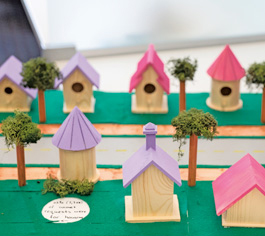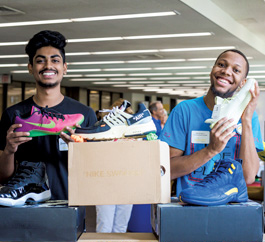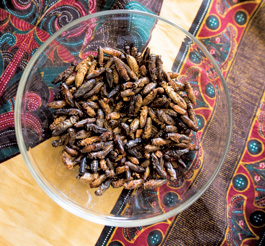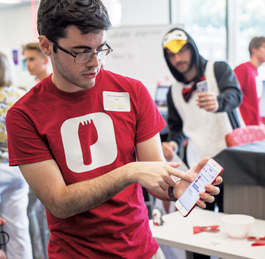'Hatching' New Ideas
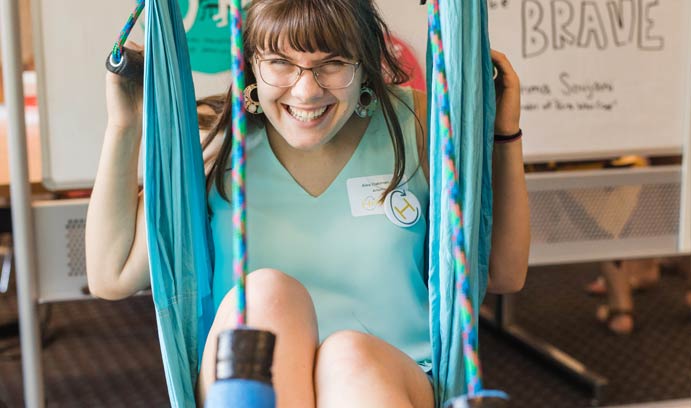
Alea Oakman '20 designed Artema, an outdoor toy designed to inspire exploration and physical activity among middle school girls.
An outdoor toy designed to inspire exploration among middle-school girls. An app to help choose restaurants. A crowd-sourced digital platform to make running safer for women.
These were among the 21 potential business ideas that were “hatched” or honed by 38 students over the summer as part of the inaugural Hatchery program of the Baker Institute for Entrepreneurship, Creativity and Innovation. The program culminated in Demo Day in the sixth-floor creativity space of the Fairchild-Martindale Library, with students from Lehigh, the University of Illinois and Ashoka University of Haryana, India, showcasing their projects.
Shannon Varcoe ’15 ’16G, innovation programs manager at Baker, said it was an opportunity for students “to put their best foot forward.” And by repeatedly pitching their projects to attendees, she said, the students were able to get feedback on their ideas and insight into what they’ll need to do next to move their projects forward.
The Hatchery projects included Artema, an outdoor toy designed to inspire exploration and physical activity among middle-school girls; Preff, an app that helps users choose restaurants; Take Back the Trail, a crowd-sourced digital platform that aims to make running safer for women; and HomeBase, which would help those in crisis to find safe housing quickly and easily.
“Worry about your pace, not your space,” team members Emma Kwasnoski ’20 and Cole Redfern ’19 promoted with their “Take Back the Trail” app. Kwasnoski, a runner, said she has been harassed while running, including being followed or facing catcalls. “Those experiences really made me want to do something about it,” she said.
The app would allow runners to pinpoint where, on a trail or other area, they might have been followed, flashed or subjected to catcalls on a specific date or time. That would alert other runners, who could then avoid the area if they choose. The students said the information could be shared with police.
The Preff team—Dominick Allen ’20, Jack Cunningham ’21, Cameron Cipriano ’21 and William Peracchio ’21—developed an app that helps users choose restaurants based on the recommendations of friends and family. It also allows restaurant owners to manage the customer relationship.
“Eating out is a social experience,” said Peracchio, who donned a penguin suit to pitch the app. (Penguins are picky eaters, he points out.) The app, he said, “puts everything into context—for good and for bad.” For example, users can better judge a review since they know the reviewer and know if their tastes are similar or different.
The student projects were developed under one of the Hatchery’s five “Nests”: the nine-credit Venture Nest, which focuses on creating innovative solutions within topics of students’ choice; the Homelab Nest, which tackles homelessness, sustainable housing and community empowerment; the Edtech Nest, with a focus on leveraging peer-to-peer learning to improve the higher education experience; the Healthcare Nest, which addresses health, social care and wellness challenges; and the Civlab Nest, which addresses social issues in local and global communities.
The Nests were led by faculty, staff and community experts who helped students develop problem-based ideas into entrepreneurial solutions.
A two-week Boot Camp gave students a crash course in design thinking, creativity techniques and the entrepreneurial mindset. Students spent the rest of the summer developing and refining their projects, and sometimes changing course.
“They really evolved in an interesting way over the summer,” Varcoe said.
Speakers and workshops focused on areas such as branding, social media and product development.
Photos by Christa Neu
Posted on:


